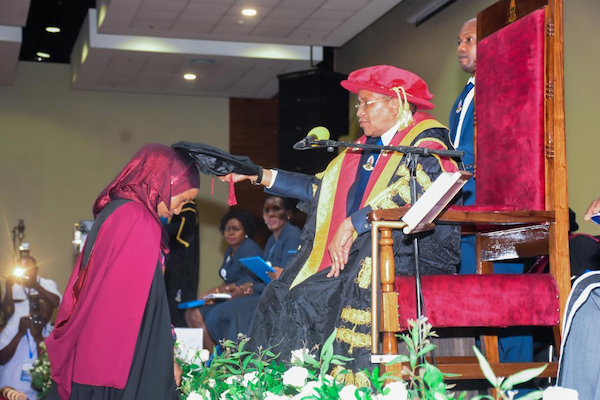Previously, physicians had to go through verbal autopsy reports to determine the causes of death, which was tedious, time consuming and prone to bias. The new AI model enables the government to identify causes of death in real time and plan for timely interventions based on morbidity patterns.
A beneficiary of the AI4D Africa scholarship project has developed a unique AI model that can easily determine causes of deaths for patients who die out of hospital.
Consequently, the government of Tanzania is now changing how it collects, compiles and reports mortality statistics.
Dr. Mahadia Tunga, who was funded by the AI4D Africa Scholarship project, recently graduated with a Phd in Data Science from the University of Dar es Salaam. The Project is funded by IDRC and SIDA.
Development of the model was prompted by the high number of people who die out of hospital and whose causes of death are not recorded - or wrongly attributed.
The model is based on a list of about 500 questions developed by WHO, which is administered by community health volunteers in Tanzania to collect data on the symptoms leading to death for those who die out of hospital. This process is known as verbal autopsy. This data could then be used by physicians to determine the causes of death.
Out of a list of 500 questions in the WHO questionnaire, she identified the minimal set of optimal questions that could be used to establish the causes of death and also to reduce the time someone interviews.
“These questions record signs and symptoms to determine the causes of death. Currently it takes at least 45 minutes and is very tedious and time consuming,” she said.
She developed the AI model using existing data to determine cause of death for those who die out of hospital. To validate the accuracy of the model, the Ministry of Health compared results of the verbal autopsy generated by the model with those verified by the physicians. The model registered 97% accuracy.
Previously, the Ministry of Health in Tanzania compiled verbal autopsy and medically certified reports separately.
“Previously, to compile mortality statistics, physicians had to go through the questions to determine the cause of death, which was tedious and could be also be biased. It also came with the risk of double counting,’ she explained
This methodology has now changed: This year’s report will integrate both sets of data – medically certificated reports and verbal autopsy generated by the model - into one national mortality statistics report.

Dr. Mahadia Tunga being conferred a PhD degree in Data Science at Nelson Mandela African Institution of Science and Technology in Tanzania. Her studies were partly funded by the AI4D Africa Scholarship project.
She is now working with the Ministry to use the verbal autopsy based on the model to generate causes of death in real time rather than wait for the physician to go through the data and determine the causes of death.
“Previously, CHVs had to share the results with the physicians to determine the cause of death after every year but this tool will give the results instantly. The government will be able to know the causes of death in real time and plan for interventions based on morbidity patterns instead of getting the results a year later,” she said.
The Role of AI4D Africa Scholarship project
According to Dr Tunga, this model would not have been developed as quickly as it was without support from the AI4D Africa Scholarship project.
“Conducting this kind of study is expensive. It required the researcher to go to the field and understand how the data is being collected, validation, getting permits, engaging Ministry officials. It helped me a lot with regard to financial and also credibility of the work. This support also made me complete my Phd studies in record 3 years or less,” she said.
She is now engaging with WHO verbal autopsy working group to work out how they can incorporate narratives on the verbal autopsy reports to improve their quality.

